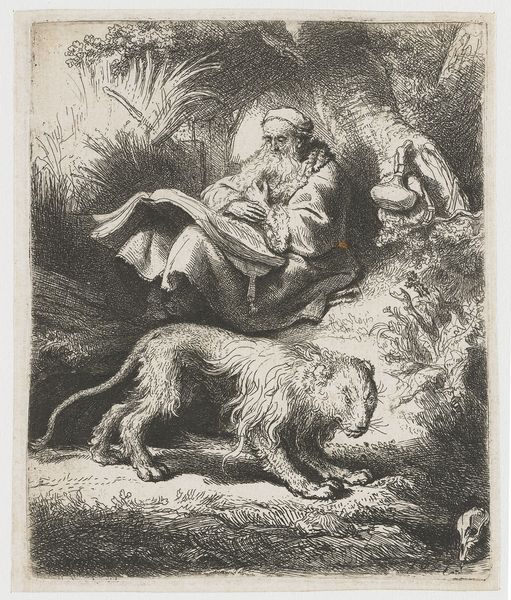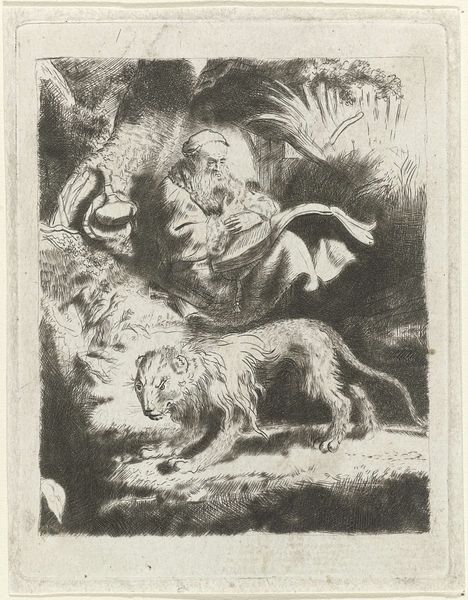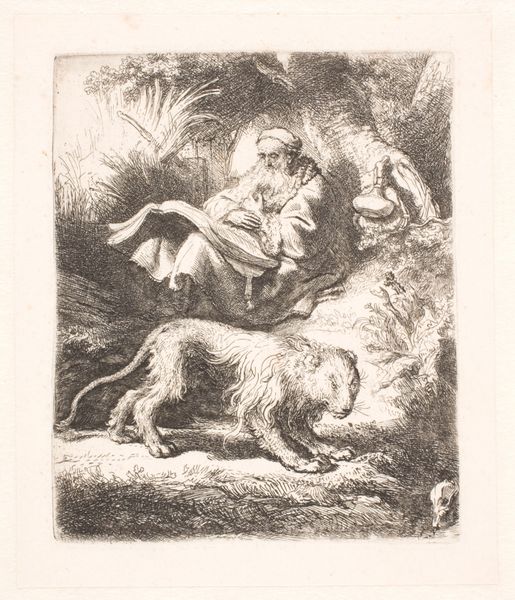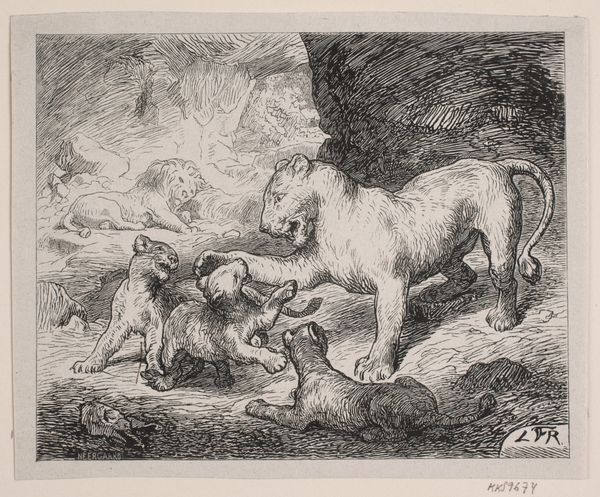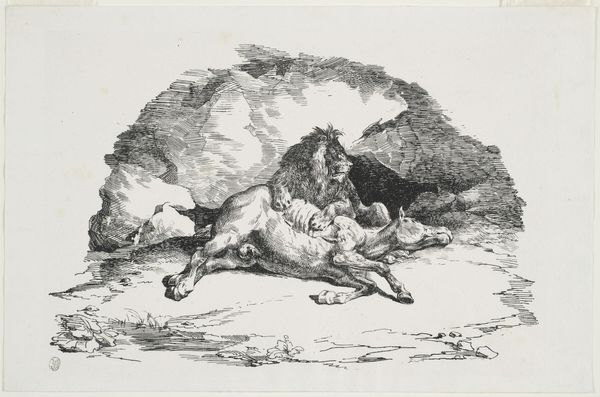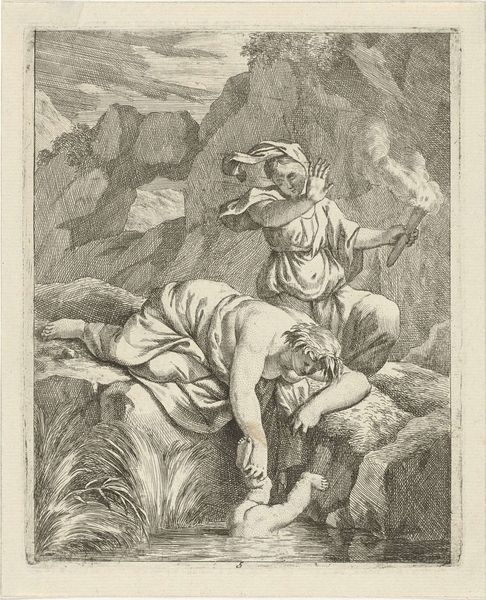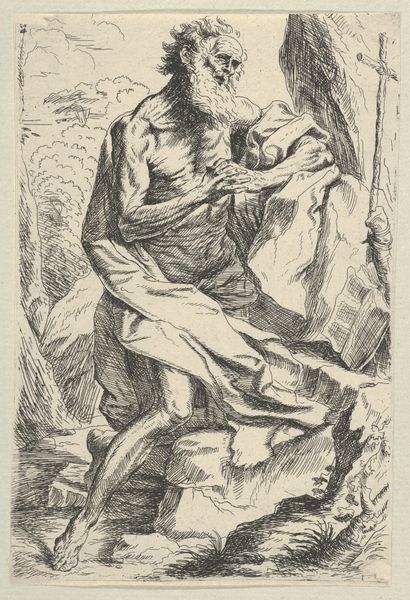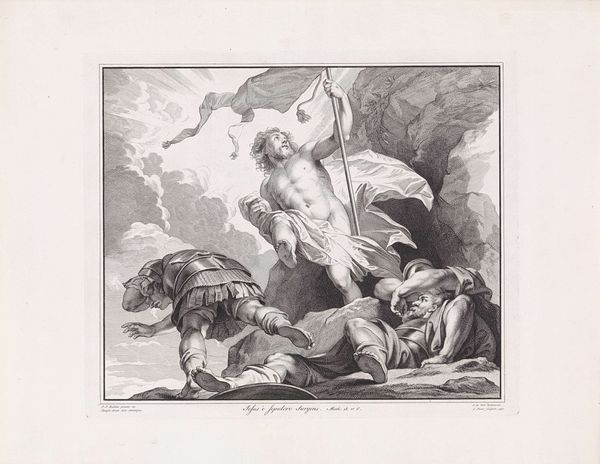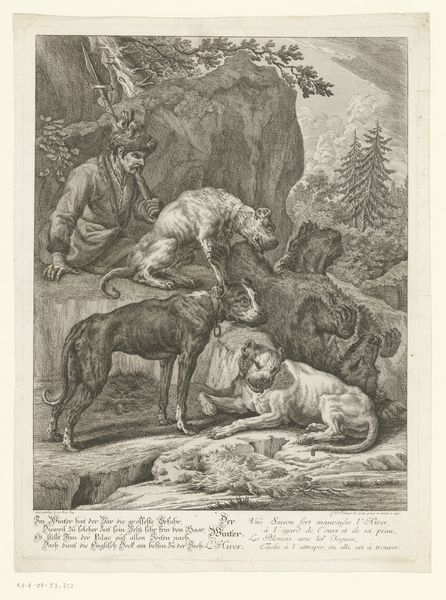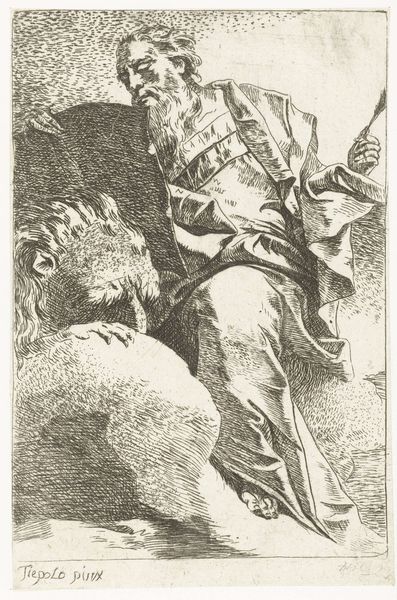
drawing, pencil, charcoal
#
portrait
#
drawing
#
baroque
#
pencil sketch
#
landscape
#
figuration
#
pencil drawing
#
pencil
#
surrealism
#
sketchbook drawing
#
portrait drawing
#
charcoal
#
history-painting
#
pencil art
Dimensions: height 119 mm, width 98 mm
Copyright: Rijks Museum: Open Domain
Editor: So, this is "The Holy Jerome in the Desert" by Moses ter Borch, made in 1661. It’s a drawing, and there’s a stillness despite the lions... what is your interpretation? Curator: It’s fascinating how Ter Borch visualizes Saint Jerome, isn't it? Considering its time, representations like this served to reinforce the Church's power through visual narratives. Notice how Jerome is portrayed – a scholar, absorbed in scripture, even in the wilderness. How might this depiction be perceived by the public in 17th-century Netherlands, a society undergoing religious and political shifts? Editor: That’s interesting. It almost seems like a statement of defiance against, say, simpler forms of Protestantism which rejected such iconography? The fact he is calmly studying feels deliberate. Curator: Precisely! Art often functioned as propaganda, shaping public opinion. Consider the placement of the lion, traditionally a symbol of strength and royalty but also associated with Jerome. Is it a protector, or is Ter Borch hinting at something more? Editor: Maybe both? Authority is kind of part of what the church would have projected. What strikes me now is that even in something that looks simple, there’s layers and layers of context. Curator: Absolutely. By exploring the socio-political context in which art is made and viewed, we gain a far richer appreciation for its intended, and perhaps unintended, meanings. This little drawing speaks volumes! Editor: Thanks, that gives me a lot to consider!
Comments
No comments
Be the first to comment and join the conversation on the ultimate creative platform.
